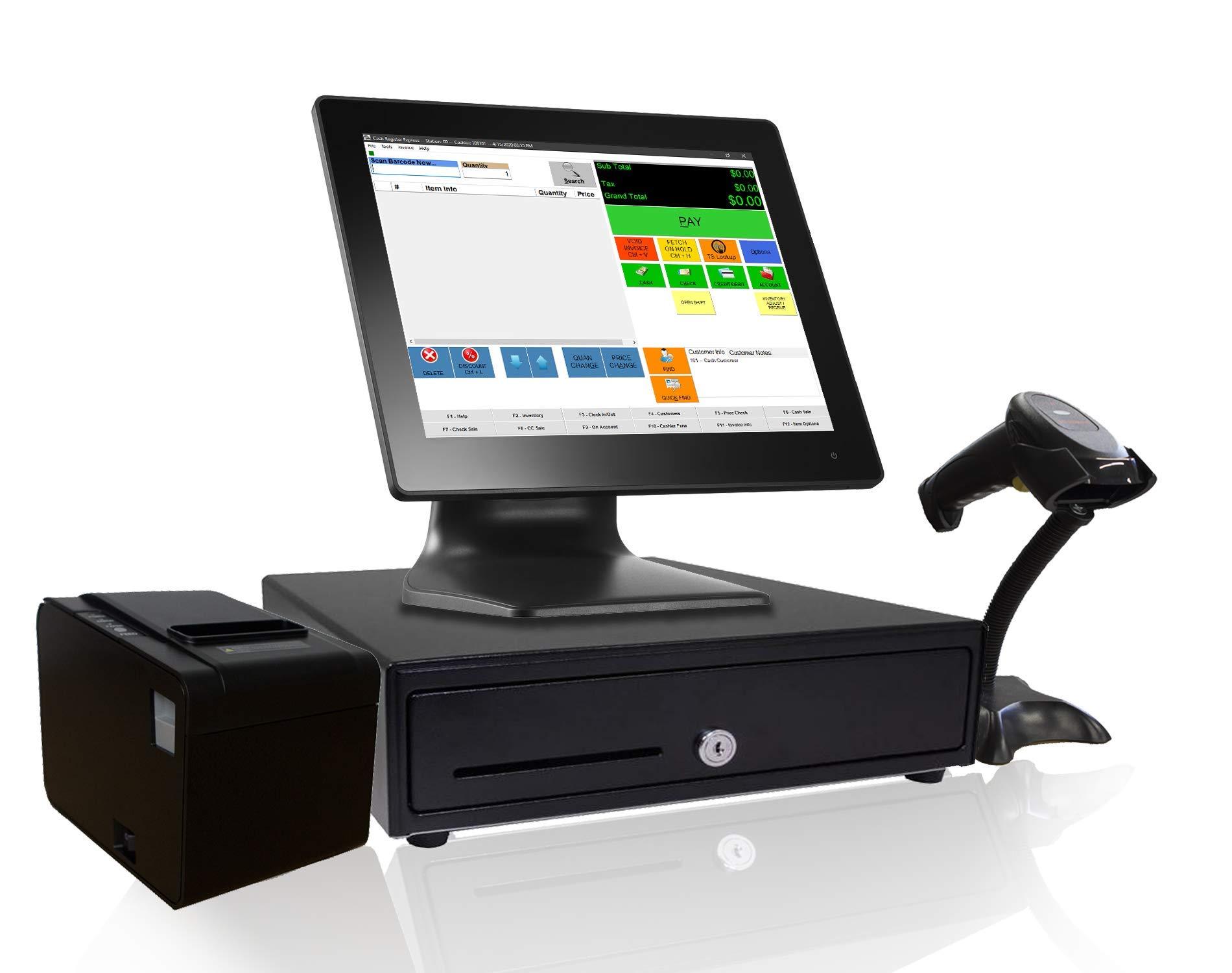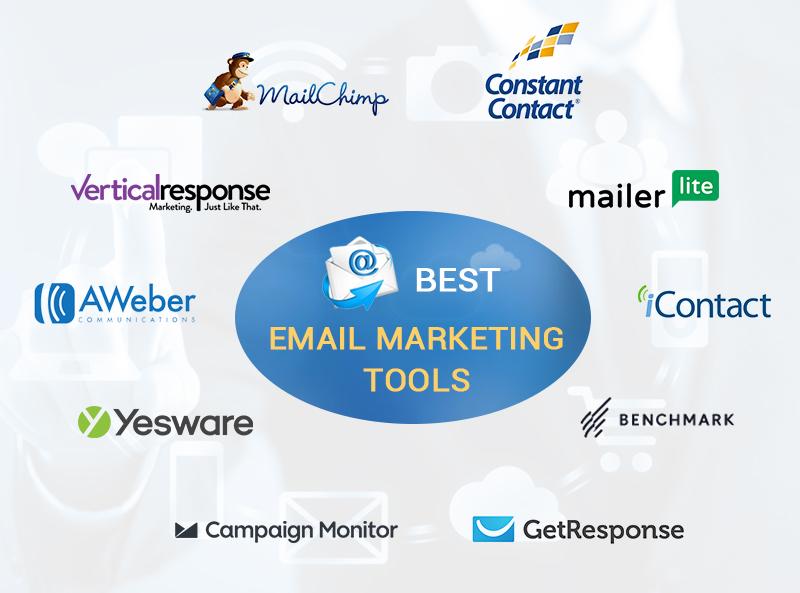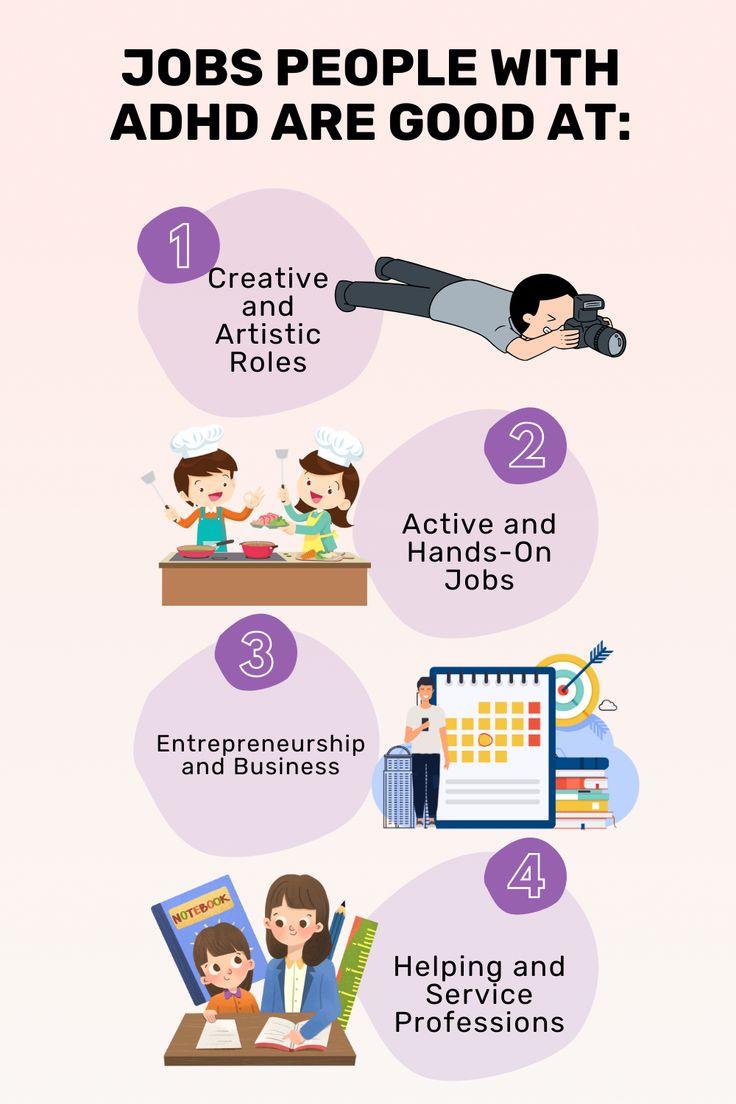
In today’s competitive marketplace, finding innovative ways to boost your sales is more critical than ever. Enter cross selling—a powerful strategy that not only enhances customer experience but also significantly increases your revenue. But what exactly is cross selling, and how can it work wonders for your business? Imagine a customer walking into a store to buy a new smartphone but leaving with a protective case, earbuds, and a battery pack—all because you seamlessly suggested these complementary products. In this article, we’ll dive into the concept of cross selling, explore its benefits, and share some real-world examples that demonstrate just how effective it can be. Whether you’re a seasoned business owner or just starting out, you’ll discover actionable insights to help you transform casual shoppers into loyal customers. Let’s unlock the potential of cross selling and watch your sales soar!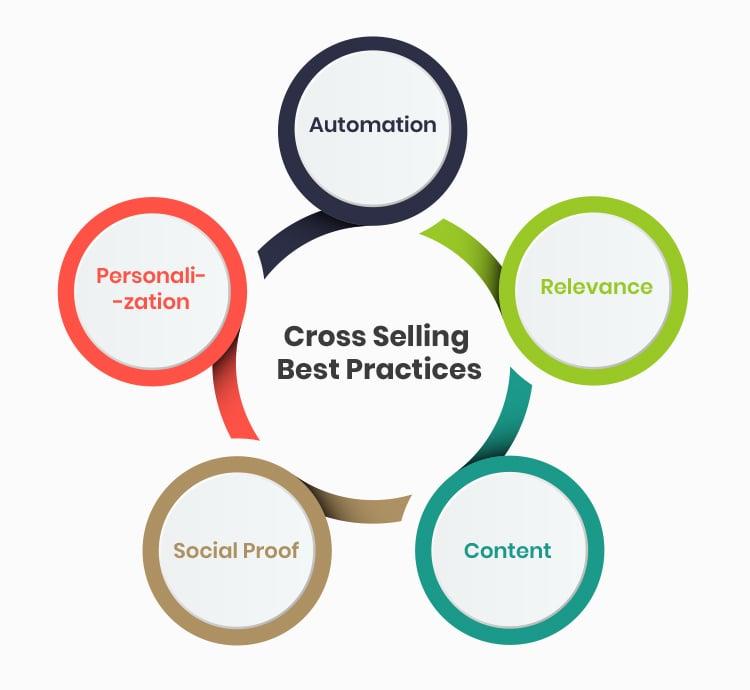
Understanding Cross Selling and Its Importance for Your Business
Cross selling is an essential strategy that enables businesses to enhance their revenue by encouraging customers to purchase additional products or services that complement their original choice. This practice not only increases the average order value but also enriches the customer’s experience by providing them with relevant options that they may not have considered. In a world where consumer needs are dynamic, understanding and implementing effective cross selling techniques can set your business apart from the competition.
At its core, cross selling involves suggesting related items to a customer at the point of sale. This could be done in various ways, such as:
- During conversations: A sales representative can recommend related products based on the customer’s interests.
- Online suggestions: E-commerce platforms often use algorithms to display ‘frequently bought together’ items.
- Promotional bundles: Offering discounts on related items can entice customers to make additional purchases.
The importance of cross selling lies in its ability to build stronger customer relationships. When customers feel that their needs are understood and catered to, their loyalty towards your brand increases. This loyalty is crucial for long-term success as it often leads to repeat purchases and positive word-of-mouth referrals.
Moreover, cross selling can significantly lower customer acquisition costs. Retaining existing customers and encouraging them to buy more is generally more cost-effective than attracting new ones. By focusing on your current clientele and suggesting products that align with their preferences, you can maximize profitability with minimal investment.
Here are some compelling benefits of effective cross selling:
- Enhanced Customer Experience: Tailored suggestions make customers feel valued.
- Increased Revenue: Higher average order value contributes directly to profit margins.
- Better Inventory Management: Promoting related items helps in moving slower inventory.
To illustrate the impact of cross selling, consider the following table showcasing real-world examples:
| Business Type | Cross Selling Example |
|---|---|
| Online Retailer | “Customers who bought this item also bought…” |
| Restaurants | Suggesting a drink or dessert with meal orders. |
| Software Companies | Offering add-ons or premium features during checkout. |
mastering the art of cross selling can lead to a win-win situation for both your business and your customers. By effectively implementing strategies that promote additional purchases, you not only boost your sales but also foster an engaging and satisfying customer journey. This strategy is not just about increasing numbers; it’s about building a holistic approach to customer satisfaction and loyalty that translates into sustainable growth.
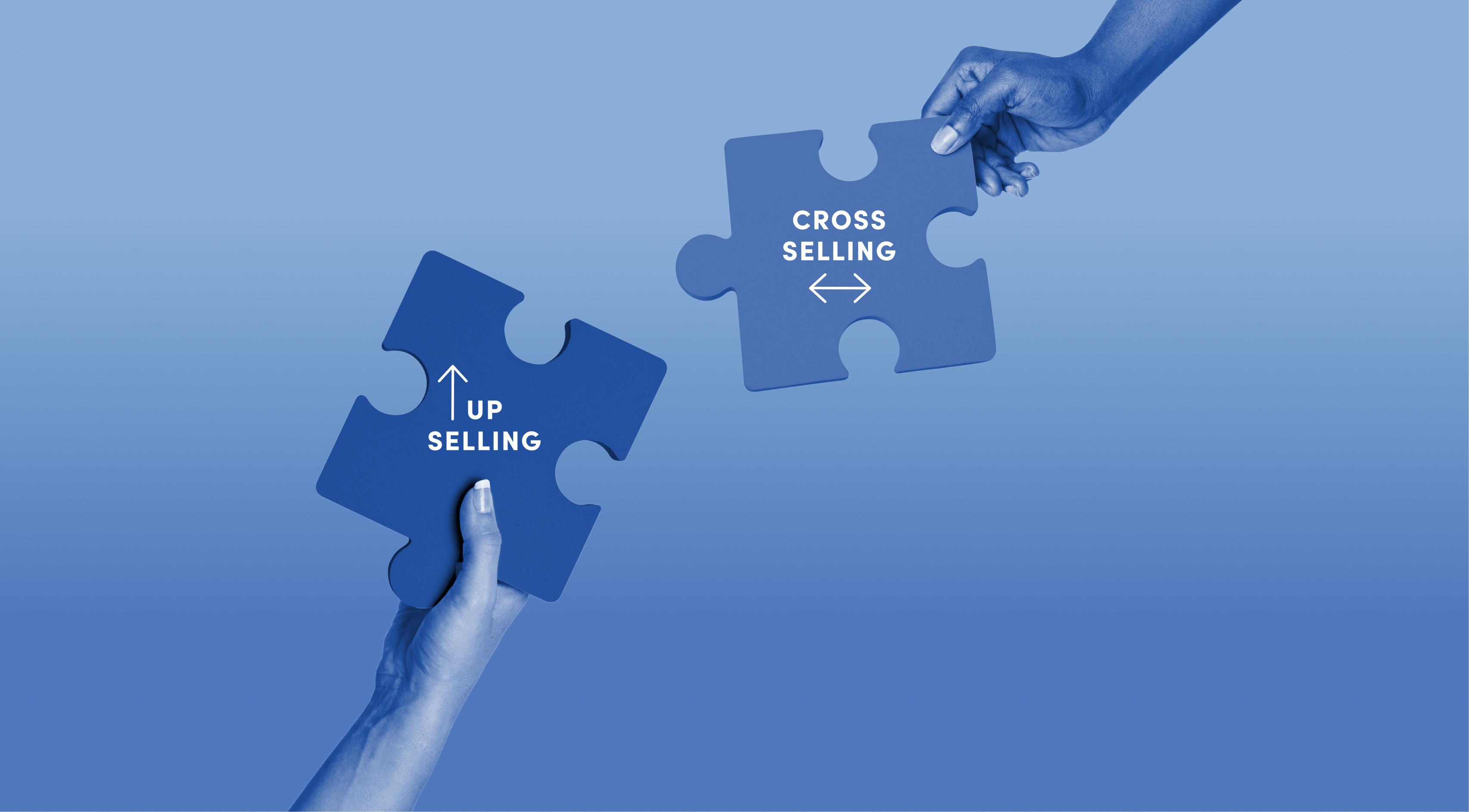
The Psychology Behind Cross Selling: Why It Works
Understanding the psychology behind cross-selling reveals a fascinating interplay between consumer behavior and marketing strategies. At its core, cross-selling leverages the principle of reciprocity, which suggests that when customers perceive value, they feel inclined to reciprocate by making additional purchases. This instinctual reaction can be harnessed to enhance customer satisfaction and loyalty while simultaneously increasing sales volume.
One of the driving forces behind effective cross-selling is the concept of anchoring. When a customer is presented with a primary product, it sets a mental anchor that influences their perception of subsequent offers. For instance, if a consumer is shopping for a laptop and encounters a recommended warranty plan alongside it, the initial price of the laptop serves as a reference point, making the warranty seem like a minor, justifiable expense.
Additionally, the use of social proof can significantly influence purchasing decisions. When customers see that others have bought complementary products, it creates a sense of validation. Marketers can utilize this concept by showcasing customer reviews or “frequently bought together” sections. This not only enhances credibility but also makes consumers more likely to explore additional offerings.
Another psychological trigger is the fear of missing out (FOMO). In cross-selling scenarios, this can manifest when a customer is informed that a complementary product is in limited supply or available at a special price for a limited time. This urgency compels customers to act quickly, often resulting in impulse purchases that benefit both the consumer and the retailer.
Personalization also plays a crucial role in cross-selling success. Tailoring recommendations based on customer preferences or previous purchases can create a sense of individualized attention. When customers feel recognized and valued, they are more likely to engage with suggestions that resonate with their needs and desires.
Moreover, the principle of commitment and consistency can be leveraged in cross-selling. When customers make an initial purchase, they are more likely to agree to related products as a way to maintain consistency with their choice. For example, if someone buys a fitness tracker, they might be more inclined to also purchase a subscription for fitness classes, as it aligns with their newfound commitment to health.
| Psychological Trigger | Description |
|---|---|
| Reciprocity | Customers feel obliged to return the favor after receiving value. |
| Anchoring | The first price seen influences perceptions of subsequent offers. |
| Social Proof | Validation through others’ purchases boosts confidence in buying. |
| FOMO | Urgency created by limited availability prompts quick decisions. |
| Personalization | Custom recommendations increase relevance and connection. |
| Commitment | Initial purchases lead to consistent follow-up buys. |
Incorporating these psychological insights not only enhances cross-selling strategies but also creates a more engaging and rewarding shopping experience for customers. By understanding the mental triggers that drive purchasing behavior, businesses can craft more effective marketing strategies that not only increase sales but also foster long-term customer relationships.

Key Differences Between Cross Selling and Upselling
When it comes to enhancing sales strategies, understanding the nuances between cross-selling and upselling is crucial for any business. While both techniques aim to increase the average transaction value, they each employ distinct approaches to engage customers.
Cross-selling focuses on encouraging customers to purchase complementary products. For instance, if a customer buys a laptop, offering them a laptop bag or an extended warranty is a classic example of cross-selling. This technique not only enhances the customer’s overall experience but also satisfies their potential needs by presenting products that align well with their initial purchase.
On the other hand, upselling aims to convince customers to opt for a more expensive version of the product they are considering. This could be as simple as suggesting a premium phone model with better features over the standard model. The goal here is to highlight the added value of the higher-priced item, making it an appealing choice for the customer looking to make a wise investment.
Here are a few key differentiators:
- Objective: Cross-selling targets additional sales, while upselling seeks to increase the value of a single sale.
- Product Relationship: Cross-sold items are complementary, whereas upsold items are typically variations of the original product.
- Customer Perception: Cross-selling offers a broader range of solutions, while upselling focuses on enhancing the existing choice.
- Sales Timing: Cross-selling can occur at any point during the shopping experience, while upselling often happens at the point of sale.
| Characteristic | Cross-Selling | Upselling |
|---|---|---|
| Purpose | Increase overall sales | Increase average transaction value |
| Product Type | Complementary | Higher-end version |
| Timing | Throughout the shopping experience | At the point of sale |
| Customer Relationship | Broadens the range of options | Focuses on a single product |
Both techniques can be incredibly effective when employed strategically. For businesses, it’s about knowing when and how to leverage each method. For example, a restaurant might cross-sell drinks and desserts while upselling by suggesting a larger portion of a dish or a premium drink pairing. This not only elevates the dining experience but also maximizes revenue.
To sum it up, while cross-selling and upselling may share the same ultimate goal of boosting sales, they cater to different aspects of the purchasing decision. By understanding these distinctions, businesses can tailor their sales approaches to meet customer needs more effectively, creating a win-win situation for both the seller and the buyer.
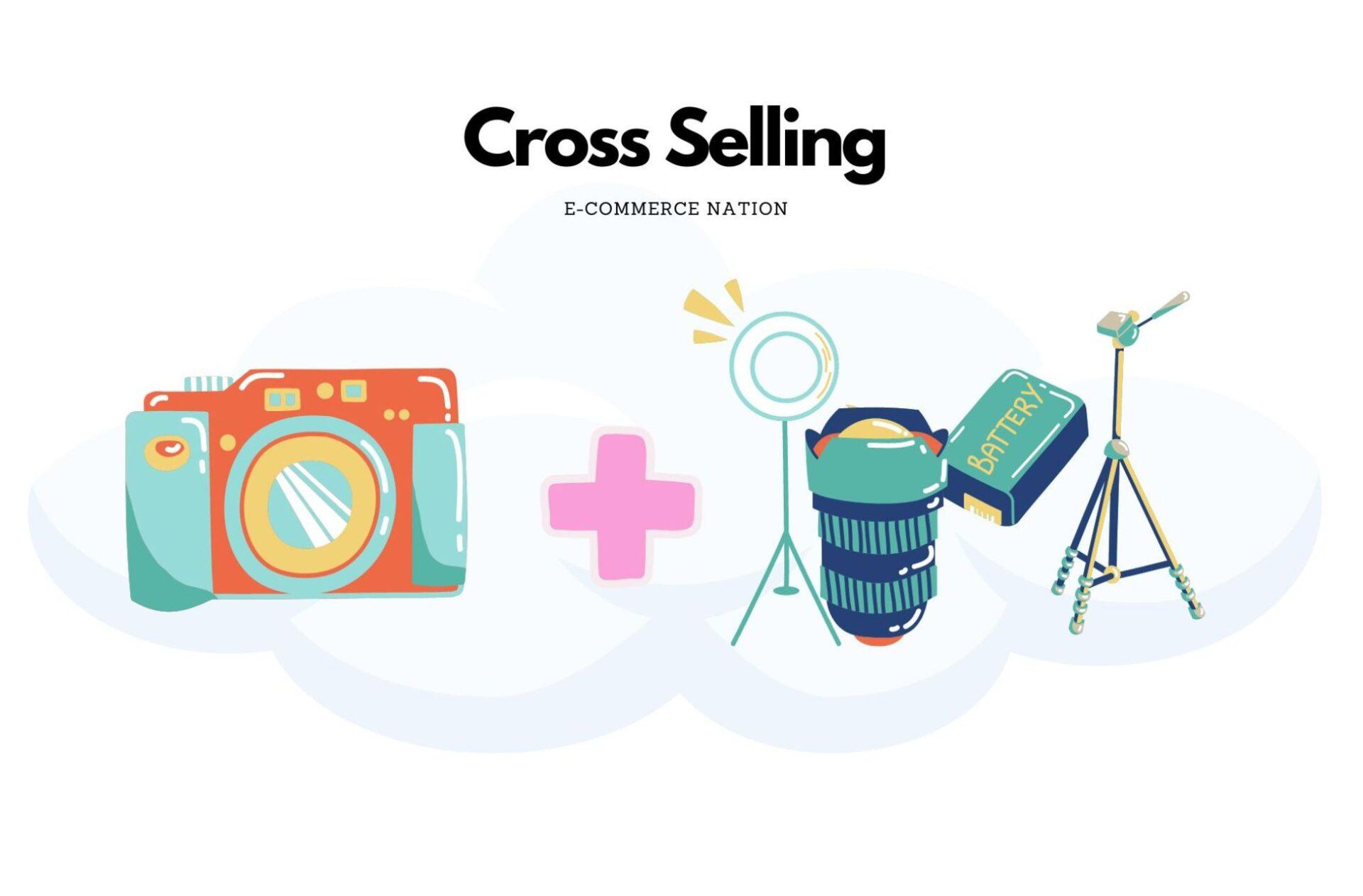
Identifying Opportunities for Cross Selling in Your Sales Funnel
Identifying opportunities for cross-selling within your sales funnel is crucial for maximizing revenue and enhancing customer satisfaction. By strategically placing related products or services at the right moments in the customer journey, you can not only boost your sales figures but also create a more cohesive experience for your customers.
To begin, consider the different stages of your sales funnel:
- Awareness: At this stage, customers are just learning about your brand. Highlight complementary products that resonate with their interests.
- Consideration: Here, your potential customers are weighing their options. Provide content or suggestions that showcase how additional products can enhance their primary choice.
- Decision: When customers are ready to make a purchase, offer them related items as add-ons. This could take the form of bundled deals or discounts on future purchases.
- Retention: After a sale, keep customers engaged by reminding them of other products that complement their previous purchases. This not only encourages repeat sales but also builds loyalty.
To pinpoint the best opportunities for cross-selling, analyze your customer data. Look for patterns in purchase history and preferences. For instance, if customers frequently buy a specific product, consider what items are commonly purchased alongside it. This insight can guide your cross-selling efforts.
Another effective strategy is to implement a recommendation engine on your website. By using algorithms to suggest products based on user behavior, you can offer personalized recommendations that feel natural rather than forced. This not only improves the shopping experience but also significantly increases the likelihood of additional sales.
Don’t forget about seasonal trends and events. Special occasions like holidays or back-to-school seasons present excellent opportunities for cross-selling. Craft tailored promotions that highlight products relevant to these events. For example:
| Season/Event | Cross-Sell Opportunities |
|---|---|
| Christmas | Gift wrapping services, holiday decorations |
| New Year | Fitness products, health supplements |
| Back to School | Stationery, backpacks, lunch boxes |
Lastly, train your sales team to recognize and act on cross-selling opportunities. Equip them with the knowledge to understand how products complement each other and how to communicate this effectively to customers. When your team is aligned and aware, they can drive more sales during interactions.
By identifying and leveraging these opportunities at each stage of your sales funnel, you can create a more effective cross-selling strategy that not only increases your profits but also enhances your customers’ experience with your brand.
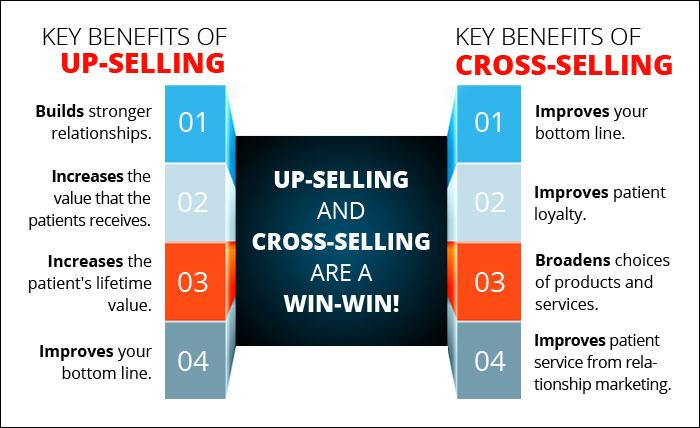
Effective Strategies to Implement Cross Selling in Your Business
Implementing effective cross-selling strategies can significantly enhance your business’s revenue while improving customer satisfaction. Here are some actionable approaches to get started:
Understand Your Customer’s Needs: The foundation of successful cross-selling lies in knowing your customers. Utilize data analytics to gather insights about their purchasing habits, preferences, and needs. This information can help you tailor your cross-selling efforts to what your customers genuinely want, increasing the likelihood of a positive response.
Train Your Sales Team: Equip your sales representatives with the knowledge and skills they need to effectively cross-sell. Conduct training sessions focused on product knowledge, communication skills, and understanding customer psychology. An informed team can confidently suggest complementary products that enhance the overall customer experience.
Bundle Products: Create irresistible product bundles that offer value to your customers. For instance, if a customer is purchasing a camera, offer a bundle that includes a lens, memory card, and carrying case at a discounted price. This not only simplifies the buying process but also encourages customers to buy more at once.
Utilize Recommendation Systems: Leverage technology by implementing recommendation engines on your website or in-store. These systems analyze customer behavior and suggest relevant products based on their previous purchases. For example, “Customers who bought this item also bought…” can effectively guide shoppers to additional purchases.
Timing is Everything: Be strategic about when you introduce cross-selling opportunities. Present complementary products during the checkout process, or after a purchase confirmation email. This timing can capitalize on the customer’s positive buying experience, making them more receptive to additional offers.
Offer Incentives: Promote your cross-selling campaigns with attractive incentives. Discounts, loyalty points, or special promotions can motivate customers to consider additional products. For instance, “Buy one, get one 50% off” or “Get a free gift with your purchase” can make a significant difference in customer engagement.
Monitor and Adjust: Regularly assess the effectiveness of your cross-selling strategies. Utilize metrics such as conversion rates and average order value to gauge performance. Don’t hesitate to adjust your tactics based on what the data reveals to ensure your approach remains relevant and effective.
| Strategy | Benefit |
|---|---|
| Understanding Customer Needs | Tailored offers, higher engagement |
| Training Sales Team | Confidence in selling, higher success rates |
| Product Bundling | Increased perceived value, simplicity |
| Recommendation Systems | Personalized suggestions, improved sales |
| Timing Offers | Higher receptiveness, better conversion rates |
| Offering Incentives | Encouraged spending, customer loyalty |
| Monitoring Strategies | Continuous improvement, data-driven decisions |
By integrating these strategies into your business model, you can effectively leverage cross-selling to not only increase your sales figures but also enhance the overall shopping experience for your customers. The key is to create value and foster relationships, turning one-time buyers into loyal customers.
Crafting the Perfect Cross Sell Pitch: Tips for Success
Crafting an effective cross-sell pitch is an art that combines understanding your customer, product knowledge, and strategic communication. To truly resonate with your audience, you need to ensure that your pitch feels natural and beneficial rather than forced. Here are some tips to help you master the perfect cross-sell.
- Know Your Customer: Take the time to understand your customer’s needs, preferences, and previous purchases. This insight allows you to tailor your recommendations effectively.
- Highlight Benefits: Focus on how the additional product complements what they are already buying. Emphasize the value it adds or the problem it solves.
- Keep It Relevant: Only suggest products that are closely related to their current purchase. A well-chosen item can enhance their experience and increase satisfaction.
- Utilize Timing: The best moment to pitch a cross-sell is right after a purchase decision has been made. This is when customers are most receptive to suggestions.
Make sure your pitch is concise yet persuasive. Use language that is friendly and supportive rather than pushy. For example, instead of saying, “You should buy this,” try phrasing it as, ”Many of our customers who loved this product also found this one helpful!” This subtle shift in language can make a huge difference.
| Product | Cross-Sell Suggestion | Benefit |
|---|---|---|
| Smartphone | Protective Case | Increases durability |
| Camera | Tripod | Improves stability |
| Blender | Cookbook | More recipe ideas |
Furthermore, visualize your products together. If possible, create bundles or package deals that showcase how well the items work together. This not only simplifies the buying decision but also enhances the perceived value. When customers see the combined benefits, they are more likely to make the additional purchase.
follow up after the sale. Sending a thank-you email with related product suggestions can keep your brand top-of-mind and create opportunities for future sales. A personalized message that reinforces their original purchase while casually introducing complementary items can lead to higher customer retention and loyalty.

Real-Life Examples of Successful Cross Selling Techniques
Cross selling is an art, and several successful companies have mastered it, turning a simple shopping experience into a more lucrative venture. Here are some real-life examples that showcase effective cross selling techniques:
Amazon: The Ultimate Recommendation Engine
Amazon is perhaps the most famous example of successful cross selling. When you view a product, the site suggests related items with the phrase “Customers who bought this also bought…”. This technique not only enhances the shopping experience but also increases the average order value. By showing complementary items, Amazon encourages customers to add more to their carts, effectively boosting sales.
McDonald’s: The Iconic Upsell
Think about your last visit to McDonald’s. The classic “Would you like fries with that?” is a textbook example of cross selling. This simple question prompts customers to consider additional items that complement their meal, leading to increased revenue. McDonald’s has perfected this technique by making it a standard part of the ordering process, showing how effective it can be when integrated seamlessly.
Sephora: Personalized Product Recommendations
Sephora takes cross selling to the next level with its personalized recommendations. When customers purchase a specific skincare product, they are often presented with complementary items like serums or moisturizers tailored to their skin type. This strategy not only encourages additional purchases but also reinforces the idea that Sephora understands their customers’ needs.
Best Buy: Bundling for Value
Best Buy excels in cross selling through product bundling. When customers are looking to buy a new television, they are often presented with options for related products like HDMI cables, sound systems, or warranties. By bundling these items together, Best Buy not only increases the overall sale but also provides added value to the customer, making it an attractive proposition.
Netflix: Suggested Viewing
While not a traditional retail example, Netflix employs a form of cross selling through its “Because You Watched…” feature. By analyzing viewing habits, Netflix recommends shows and movies that complement the viewer’s interests. This not only keeps customers engaged but also encourages them to explore more content, increasing subscription value and customer satisfaction.
Target: Personalized Promotions
Target has perfected the art of cross selling through personalized promotions. By using data analytics, they can send tailored offers to customers based on their shopping history. For instance, if a customer frequently buys baby products, they might receive coupons for related items like diapers or baby food. This strategy fosters customer loyalty and drives additional sales through relevant offers.
| Brand | Technique | Key Benefit |
|---|---|---|
| Amazon | Product Recommendations | Increased cart value |
| McDonald’s | Upselling | Higher transaction value |
| Sephora | Personalized Suggestions | Enhanced shopping experience |
| Best Buy | Bundling Products | Value addition |
| Netflix | Suggested Viewing | Increased engagement |
| Target | Personalized Promotions | Customer loyalty |
These companies exemplify how effective cross selling can significantly impact sales. By integrating these strategies into your business model, you can enhance customer satisfaction while increasing your bottom line.

Leveraging Data and Customer Insights for Better Cross Selling
In today’s competitive market, understanding your customers is more crucial than ever. By harnessing the power of data and customer insights, businesses can significantly enhance their cross-selling strategies. This means not just selling more products, but selling the right products to the right customers at the right time.
First, let’s talk about the types of data that can be invaluable for cross-selling:
- Purchase History: Analyzing what customers have bought in the past helps identify patterns and preferences.
- Browsing Behavior: Monitoring what customers look at on your website can reveal interests that may not be immediately obvious.
- Demographics: Understanding the age, location, and gender of your customers can guide you in tailoring recommendations.
- Feedback and Reviews: Insights from customer feedback can highlight potential needs and desires that can be addressed through cross-selling.
Once you’ve gathered this data, it’s time to put it to work. Create personalized offers based on the insights you’ve gained. For instance, if a customer frequently purchases garden tools, you might suggest complementary items like seeds or soil enhancers. This not only enhances their shopping experience but also increases your average order value.
Another effective strategy is to utilize predictive analytics. By leveraging algorithms that analyze customer behavior, businesses can forecast what products are likely to be purchased together. This data-driven approach allows you to create targeted marketing campaigns that resonate with your audience.
Consider implementing dynamic recommendations on your e-commerce platform. For example, a customer browsing for a camera could be presented with options for lenses, tripods, and memory cards in real-time. These recommendations should be based on both individual behavior and broader trends observed from other customers.
To illustrate the power of data in cross-selling, here’s a simple table showcasing potential cross-selling opportunities:
| Product | Cross-Sell Products |
|---|---|
| Smartphone | Phone Case, Screen Protector, Wireless Charger |
| Running Shoes | Socks, Fitness Tracker, Water Bottle |
| Cookbook | Cooking Utensils, Ingredients, Apron |
Incorporating these insights into your sales strategy not only boosts revenue but also fosters customer loyalty. When customers feel that you understand their needs and provide them with tailored suggestions, they are more likely to return for future purchases.
Ultimately, leveraging data and customer insights for cross-selling is about building relationships. It’s not merely about pushing more products; it’s about enriching the customer experience and providing genuine value. As you refine your approach, remember that the most successful strategies are those that keep the customer’s best interests at heart.
Common Mistakes to Avoid in Cross Selling
Cross selling can be a powerful strategy for increasing sales, but it’s essential to navigate this approach carefully. Many businesses falter not because the concept is flawed, but due to common missteps that can alienate customers rather than engage them. Here are some frequent pitfalls to steer clear of:
- Overwhelming Customers: Bombarding customers with too many suggestions at once can lead to confusion and frustration. Instead, focus on a select few relevant products that complement their current purchase.
- Ignoring Customer Needs: Failing to consider what your customers actually want can make your cross selling efforts feel forced. Take the time to understand their preferences and tailor your recommendations accordingly.
- Neglecting Timing: Timing is crucial in cross selling. Trying to upsell too early in the buying process can be off-putting. Wait until the customer has made a decision before suggesting related products.
- Lack of Personalization: Customers appreciate personalized experiences. Using their purchase history or preferences to tailor suggestions can significantly increase the effectiveness of your cross selling efforts.
Another common mistake is failing to train staff adequately on cross selling techniques. Employees should not only be familiar with the products but also understand how to approach customers in a way that feels natural and helpful. This requires a balance between product knowledge and interpersonal skills.
Furthermore, it’s important to avoid being too pushy. Aggressive sales tactics can backfire, leading to a negative customer experience. Instead, adopt a consultative approach. Encourage a dialogue where customers feel comfortable asking questions about the suggested products.
Incorporating customer feedback can also help refine your cross selling strategies. If customers express dissatisfaction with certain recommendations, take that into account and adjust your approach. Listening to your customers not only improves their experience but can also lead to higher sales conversions.
Lastly, track your results. Implementing cross selling without analyzing its impact can leave you in the dark. Use analytics tools to monitor which products are frequently purchased together and adjust your strategy based on performance data.
| Common Mistakes | Suggestions for Improvement |
|---|---|
| Overwhelming Customers | Limit suggestions to 2-3 high-impact products. |
| Ignoring Customer Needs | Conduct surveys or utilize data analytics. |
| Neglecting Timing | Suggest additional products post-purchase decision. |
| Lack of Personalization | Use customer profiles to tailor recommendations. |
Avoiding these common mistakes can transform cross selling from a simple tactic into a robust sales strategy that enhances the customer experience and drives revenue growth. By honing in on effective methods and remaining attentive to customer feedback and needs, businesses can maximize the potential of every sales interaction.
Measuring the Impact of Cross Selling on Your Bottom Line
To truly understand how cross selling can influence your bottom line, it’s essential to dive into the metrics that reflect its effectiveness. By implementing cross selling strategies, businesses can not only increase their average transaction value but also enhance customer satisfaction and loyalty.
One of the most significant impacts of cross selling is the increase in revenue per customer. When a customer is offered complementary products, they are more likely to make additional purchases. This is particularly evident in industries such as retail, where customers may purchase a dress along with a matching handbag and accessories. This phenomenon leads to a higher average order value (AOV) and contributes positively to overall sales figures.
Consider the following statistics that highlight the power of cross selling:
- Increased Customer Spending: Customers who receive personalized cross-selling recommendations are 60% more likely to spend more than those who don’t.
- Higher Customer Retention: Businesses employing cross selling techniques see a retention increase of 5-10%, which directly correlates to long-term revenue growth.
- Boost in Sales Conversion Rates: Companies that effectively implement cross selling strategies can achieve conversion rates that are 3-5 times higher than standard upselling methods.
Another critical aspect is the impact on customer lifetime value (CLV). By effectively cross selling, businesses can increase the total revenue generated by a customer over the entire duration of their relationship. This metric is vital for understanding the long-term financial benefits of cross selling strategies. For example:
| Customer Type | Average Spend Without Cross Selling | Average Spend With Cross Selling |
|---|---|---|
| New Customers | $100 | $150 |
| Returning Customers | $200 | $350 |
As illustrated in the table, cross selling can significantly increase the average spend of both new and returning customers. This is not just about volume; it’s about creating a more enriching shopping experience that resonates with customers and fosters loyalty.
Moreover, the operational costs associated with cross selling can be minimal compared to the potential revenue gains. Effective training of sales staff and harnessing technology to provide personalized recommendations can lead to a high return on investment. By ensuring that your team understands the products well and can suggest them confidently, you enhance the likelihood of successful cross selling.
reveals its critical role in driving revenue, enhancing customer loyalty, and improving overall sales efficiency. By analyzing these metrics and implementing effective cross selling strategies, your business can tap into substantial growth opportunities.
Enhancing Customer Experience Through Thoughtful Cross Selling
In today’s competitive market, having a great product is just the starting point. To truly excel, businesses must focus on the overall customer experience, and this is where cross selling shines. By anticipating customer needs and presenting relevant products, companies can enhance the shopping journey while simultaneously boosting their sales.
Cross selling is not just about suggesting additional items; it’s about understanding the customer’s preferences and providing value. When executed thoughtfully, it can create a seamless experience that resonates with customers. Here are some strategies to effectively implement cross selling:
- Personalization: Tailor recommendations based on past purchases or browsing history. For example, if a customer buys a smartphone, suggest cases or screen protectors that complement their choice.
- Bundling Products: Group related items together at a discounted rate. This not only encourages purchases but also allows customers to feel they’re getting more value for their money.
- Utilizing Customer Reviews: Showcase testimonials from customers who purchased the primary item along with additional products. This social proof can increase the likelihood of cross selling.
- Interactive Experiences: Create engaging content that helps customers envision their purchases in action. For instance, makeup brands could offer virtual try-ons that suggest complementary shades.
Another effective method is employing a data-driven approach. By analyzing customer behavior and sales trends, businesses can identify opportunities for cross selling. Utilizing CRM tools can help segment customer profiles, allowing for more targeted campaigns.
To illustrate this, consider a simple table showcasing potential cross sell opportunities based on different customer segments:
| Customer Segment | Primary Purchase | Suggested Cross Sell |
|---|---|---|
| Tech Enthusiasts | Laptop | Wireless Mouse, Laptop Bag |
| Fitness Buffs | Running Shoes | Fitness Tracker, Water Bottle |
| Home Chefs | Cookbook | Kitchen Gadgets, Spice Rack |
Ultimately, enhancing customer experience through cross selling requires a genuine understanding of your customers’ needs. By providing relevant suggestions and improving the overall shopping journey, businesses can build loyalty and encourage repeat purchases. Remember, the goal is to create a win-win situation where customers feel satisfied with their choices while your sales figures reflect a positive impact.

Tools and Technologies to Support Your Cross Selling Efforts
To effectively implement cross-selling strategies, leveraging the right tools and technologies can make all the difference. These resources not only streamline the process but also enhance customer experience, leading to increased sales. Here are some key tools and technologies that can help you elevate your cross-selling efforts:
- Customer Relationship Management (CRM) Systems: A robust CRM like Salesforce or HubSpot can track customer interactions and purchase history, allowing you to identify cross-selling opportunities. By analyzing this data, you can personalize product recommendations that resonate with your customers.
- Email Marketing Platforms: Tools such as Mailchimp and Klaviyo enable you to segment your audience and send targeted emails that highlight complementary products. Automated email sequences can nurture leads and suggest additional items based on previous purchases.
- E-commerce Platforms: Platforms like Shopify and WooCommerce come equipped with features that suggest related products during checkout, making it seamless for customers to add more items to their cart.
- Chatbots and AI Assistants: Implementing AI-driven chatbots on your website can engage customers in real-time. They can recommend additional products based on user queries and browsing behavior, significantly enhancing the shopping experience.
- Analytics Tools: Google Analytics and other analytics platforms provide insights into customer behavior and purchasing patterns. By understanding what products are frequently bought together, you can tailor your cross-selling strategies to boost sales.
Furthermore, integrating these tools can lead to a more cohesive strategy. For instance, by connecting your CRM with your email marketing platform, you can automate personalized product recommendations based on your customers’ purchasing history and preferences.
Consider developing a system of tracking cross-selling performance through a dedicated dashboard. Here’s a simple overview of how various tools can be utilized together:
| Tool/Technology | Functionality | Benefit |
|---|---|---|
| CRM System | Customer data management | Personalized recommendations |
| Email Marketing | Targeted campaigns | Higher engagement rates |
| E-commerce Platform | Product suggestions | Increased average order value |
| Chatbots | Real-time customer interaction | Improved customer satisfaction |
| Analytics Tools | Behavior tracking | Data-driven decisions |
By strategically employing these tools, you’ll create a more engaging shopping journey for your customers. This not only boosts your cross-selling effectiveness but also builds lasting relationships that encourage repeat business. Remember, the key is to understand your customers’ needs and seamlessly integrate product suggestions into their buying experience.
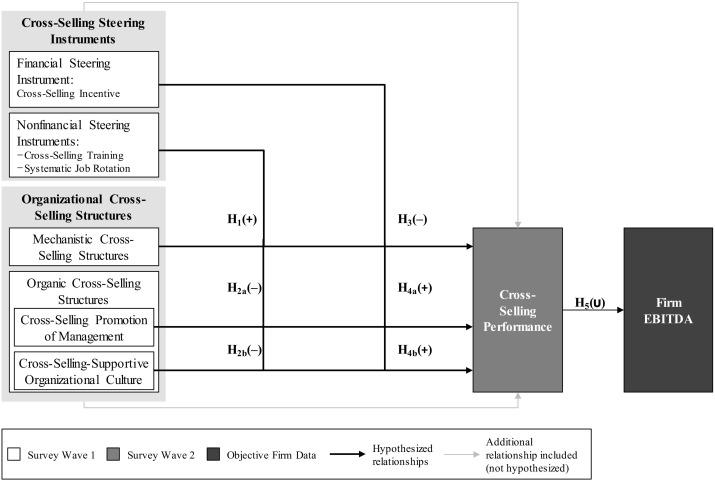
Building a Cross Selling Culture Within Your Team
Creating a culture of cross-selling within your team is essential for maximizing revenue and enhancing customer satisfaction. To do this effectively, you need to foster an environment where team members feel encouraged to suggest complementary products or services naturally. Here’s how to instill that mindset across your team:
- Training and Development: Regular workshops and training sessions should be conducted to educate your team on the benefits of cross-selling. Use role-playing scenarios to help them practice their pitch in a supportive setting.
- Set Clear Goals: Establish measurable objectives related to cross-selling. This could involve specifying targets such as the percentage of sales that should come from cross-sold items. When team members have clear goals, they are more likely to take initiative.
- Encourage Collaboration: Promote a collaborative atmosphere where team members share successful strategies and experiences. Celebrate wins, no matter how small, to motivate everyone to participate in cross-selling efforts.
- Implement Incentives: Consider introducing a reward system for those who excel in cross-selling. This could be in the form of bonuses, recognition in team meetings, or even an employee of the month program.
Moreover, integrating technology can play a pivotal role in facilitating cross-selling. Utilize customer relationship management (CRM) systems to track customer interactions and purchase history. This data can provide valuable insights that empower your team to recommend the right products at the right time.
Another crucial aspect is to ensure that your team understands the products and services offered. Organize regular product knowledge sessions to keep everyone informed about what’s available and how different offerings complement each other. When your team feels confident in their knowledge, they can make more effective cross-sell suggestions.
| Product | Complementary Product | Cross-Sell Technique |
|---|---|---|
| Smartphone | Phone Case | Bundle offer for accessories |
| Fitness Tracker | Wireless Earbuds | Suggest while discussing workout goals |
| Online Course | E-Book | Special discount for course participants |
Lastly, feedback is a critical component. Regularly seek input from your team on the cross-selling process and customer responses. This will not only help you refine your approach but also make your team feel valued and involved in the ongoing improvement of sales strategies.
By embedding these practices into your team culture, you can create a thriving environment where cross-selling becomes a natural and lucrative part of your sales process. The goal is to transform your team from mere sellers into trusted consultants who are genuinely invested in meeting customer needs.
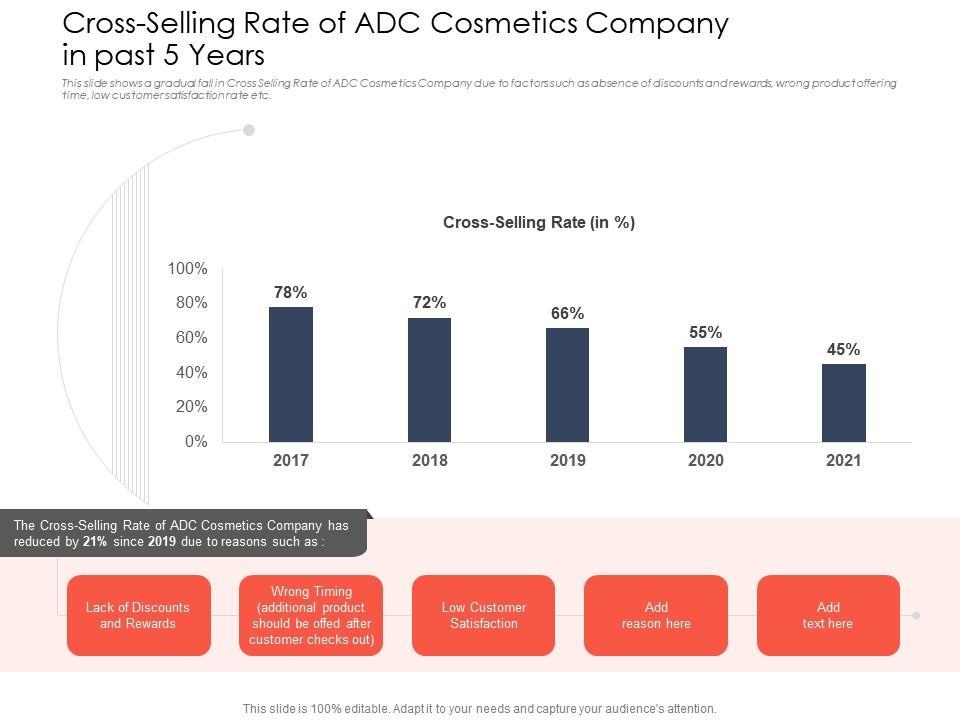
Future Trends in Cross Selling: Staying Ahead of the Game
As businesses continue to adapt to an ever-changing marketplace, cross-selling strategies are evolving to meet new consumer expectations and technological advancements. Staying ahead in this dynamic landscape requires an understanding of emerging trends that can enhance your cross-selling efforts and ultimately boost sales.
Personalization is becoming a hallmark of effective cross-selling. Customers now expect tailored experiences that resonate with their individual preferences. By leveraging data analytics and AI, businesses can create personalized product suggestions that feel intuitive and relevant. This level of customization not only improves customer satisfaction but also increases the likelihood of purchase.
Omnichannel approaches are also gaining traction. Shoppers interact with brands across multiple platforms, from social media to e-commerce websites. Integrating cross-selling techniques across these channels ensures a cohesive customer experience. For example, if a customer adds a camera to their cart, suggesting compatible accessories via email or social media can nudge them towards additional purchases.
Another exciting trend is the rise of subscription models. Many companies are now offering subscription services that bundle products together. This strategy not only fosters loyalty but also encourages customers to try new products they may not have considered otherwise. For instance, a subscription box for beauty products may introduce customers to skincare items that complement their makeup purchases.
| Trend | Description |
|---|---|
| Personalization | Utilizing data to create tailored product recommendations. |
| Omnichannel Integration | Coordinating cross-selling efforts across various platforms. |
| Subscription Models | Bundling products through recurring delivery services. |
| AI and Automation | Implementing AI tools to enhance cross-selling interactions. |
AI and automation are transforming the way businesses approach cross-selling. With machine learning algorithms capable of predicting customer behavior, brands can automate recommendations that appear at the right moments in the customer journey. This not only saves time for sales teams but also ensures that customers receive timely suggestions based on their buying patterns.
Moreover, leveraging social proof is becoming increasingly vital. Customers tend to trust recommendations from other buyers. Incorporating reviews, testimonials, and user-generated content into cross-selling tactics can enhance credibility and encourage additional purchases. Imagine a customer seeing a glowing review for a product they’re considering, along with a suggestion for a complementary item—this can significantly influence their decision-making.
Lastly, the emphasis on sustainability is changing the cross-selling landscape. Brands that promote eco-friendly products or practices often attract conscientious consumers. By highlighting sustainable alternatives or showcasing how products can work together to reduce waste, companies can not only boost their sales but also align with the values of their target audience.
Frequently Asked Questions (FAQ)
Q: What exactly is cross-selling?
A: Great question! Cross-selling is a sales technique where you offer customers additional products or services that complement their original purchase. Imagine buying a new phone and the salesperson suggests a protective case or screen protector. That’s cross-selling in action! It’s all about enhancing the customer’s experience while simultaneously boosting your sales.
Q: How does cross-selling benefit businesses?
A: The benefits are twofold! First, it increases the average transaction value, meaning customers spend more during a single visit. Second, it fosters stronger relationships with customers by providing them with products or services that genuinely enhance their purchase. Happy customers often return for more, and who doesn’t want repeat business?
Q: Can you give me some real-world examples of cross-selling?
A: Absolutely! Think of Amazon, which excels at this. When you add an item to your cart, you’ll often see suggestions like “Customers who bought this also bought…” This strategy not only prompts additional purchases but also creates a perception of value for the customer. Another example is fast-food restaurants offering a meal upgrade, like fries and a drink with a burger. Simple yet effective!
Q: What are some effective strategies for cross-selling?
A: There are plenty of strategies! Start by understanding your customer’s needs and preferences. Use data analytics to identify which products typically sell well together. Offer bundled discounts; for instance, “Buy a laptop, get 20% off on accessories.” Also, don’t forget about timing—suggest complementary items right at the point of sale, whether online or in-store.
Q: Are there any pitfalls to avoid when cross-selling?
A: Definitely! The key is to avoid overwhelming your customers. Pushy sales tactics can lead to frustration and alienation. Always ensure that the additional products genuinely enhance the customer’s original purchase. Focus on building trust rather than just making a sale.
Q: How can I implement cross-selling in my business?
A: Start small! Train your sales team to recognize opportunities for cross-selling. Utilize your website’s product recommendations wisely. Consider creating bundles or packages that naturally fit together. And remember, always ask for feedback to refine your approach and make it more effective!
Q: What results can I expect from good cross-selling practices?
A: If done right, you can expect a noticeable increase in your sales figures and customer satisfaction. Customers appreciate being offered relevant products that enhance their experience, leading to higher retention rates and positive word-of-mouth. In short, it’s a win-win for everyone involved!
Q: Is cross-selling effective for all types of businesses?
A: Yes, it can be! Whether you’re in retail, e-commerce, or even a service-based industry, cross-selling can be tailored to fit your business model. The key is to understand your audience and what additional value you can provide. With the right approach, any business can reap the benefits of cross-selling.
Q: How do I know if my cross-selling efforts are working?
A: Monitor your metrics! Look for increases in your average order value (AOV) and track the conversion rates of suggested products. Customer feedback can also provide insights into how your cross-selling strategy is perceived. If customers mention that they appreciate the recommendations, that’s a good sign you’re on the right track!
To Conclude
As we wrap up our exploration of cross selling and its potential to supercharge your sales, it’s clear that this strategy is more than just a buzzword—it’s a game changer. By understanding your customers’ needs and recommending complementary products or services, you can not only enhance their experience but also significantly increase your revenue.
Remember, successful cross selling is about building relationships and providing value. When you genuinely care about helping your customers find the right solutions, you’re not just boosting sales, you’re creating loyal advocates for your brand.
So, why not take the leap? Start implementing some of the strategies and examples we’ve discussed today. Experiment with your own offerings and watch how your sales begin to soar. With a little creativity and a customer-centric approach, you can turn every transaction into an opportunity for growth.
Thank you for joining us on this journey—now go out there and start cross selling like a pro! Your sales figures will thank you.



